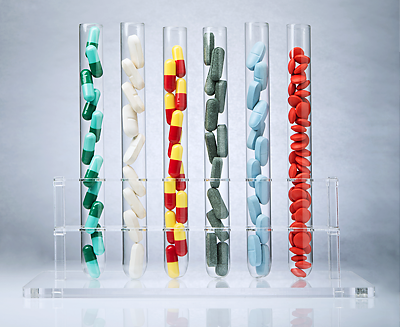Ten Non-SSRI Antidepressant Drugs Bring Hope Psychotropic Pipeline
Abstract
Though most patients with major depressive disorder respond to antidepressant treatment, previous studies report 10 to 30 percent of people with the disorder remain resistant to treatment.
Although several new antidepressants have been approved within the past decade, their pharmacology remains similar to others on the market. A substantial proportion of patients taking these medications cannot reach complete or persistent relief from depressive symptoms. A number of drug candidates, many with mechanisms different from the serotonin or norepinephrine reuptake system, may offer new hope to this population of patients.

The rapid antidepressant effect of ketamine, originally reported by researchers at the National Institute of Mental Health (NIMH) about 10 years ago, has sparked great interest in the N-methyl-D-aspartate (NMDA) receptor as a target in mood disorders. Several new molecules are currently being studied to achieve similar antidepressant effects on treatment-resistant depression with fewer adverse effects than ketamine.
Esketamine is an S-enantiomer of ketamine, as the name indicates, and is the more potent form of the racemic isomers. Janssen Research and Development LLC, a subsidiary of Johnson and Johnson, is developing an intranasal formulation of esketamine for treatment-resistant depression. If successful, a nasal spray of esketamine would be more acceptable to patients than injected ketamine. The drug is currently in phase 2 studies.
Rapastinel (also known as GLYX-13) is an injectable drug and a modulator of the NMDA receptor developed by Naurex Inc. The company has released favorable efficacy results from phase 2 studies and reported that the antidepressant effects took place as fast as two hours after a single dose. The drug has been granted “fast-track review” designation for the indication of treatment-resistant depression by the Food and Drug Administration (FDA). It is unclear whether Naurex will continue with the phase 3 program for rapastinel, as the company also has an orally active NMDA modulator known as NRX-1074 in phase 2 studies.
Another orally active drug candidate, AV-101, is a prodrug that is converted into the active NMDA receptor antagonist in the body. It is being developed by VistaGen Therapeutics Inc. in collaboration with NIMH. The company recently announced that a phase 2 trial of AV-101 will be funded and conducted by NIMH starting in 2015.
In the same pharmacological class, CERC-301 is a selective inhibitor of the NMDA receptor subunit 2B (NR2B) that is also given orally. Cerecor Inc. announced in March that the drug did not meet a primary efficacy endpoint of significantly improving depression symptoms after seven days in patients with treatment-resistant depression and suicidal ideation in a recent phase 2 study, but it showed acceptable safety.
Avanir Pharmaceuticals Inc. is testing AVP-786, a combination of deuterium-modified dextromethorphan and quinidine. Dextromethorphan is an NMDA receptor antagonist, sigma-1 receptor agonist, and inhibitor of the serotonin transporter and norepinephrine (NET) transporter. The low-dose quinidine prevents the rapid metabolism and elimination of dextromethorphan in the body. AVP-786 is in phase 2 development as an adjunctive treatment for depression and for agitation in Alzheimer’s disease.
With a different mechanism of action, the drug candidate closest to commercialization may be ALKS5461 a combination of buprenorphine and samidorphan owned by Alkerme PLC. Buprenorphine is a partial m-opioid receptor agonist and kappa-opioid receptor antagonist used to treat opioid use disorder. At least one published study by Karp and others suggests that low-dose burprenorphine may be effective against treatment-resistant depression. Samidorphan is a m-opioid receptor antagonist but is not marketed for any indication. ALKS 5461 is formulated as a once-daily oral drug. One phase 3 clinical trial has completed and showed positive results, according to a company press release in January. Additional phase 3 trials are currently ongoing. ALKS 5461 has also received the FDA’s fast-track designation for treatment-resistant depression.
Also targeting the kappa opioid receptor is CERC-501, a molecule previously developed by Eli Lilly and Co. and recently acquired by Cerecor. CERC-501 is a selective kappa opioid receptor antagonist being tested for the treatment of addiction with coexisting depression or anxiety and is currently in phase 2 clinical trials.
Perhaps the most intriguing antidepressant candidate is NSI-189 developed by Neuralstem Inc. The company specializes in neural stem cell therapies. NSI-189 is a small molecule that purportedly stimulates neuron generation in the hippocampus. If effective, it may be used to treat a host of neurological disorders that involve hippocampal volume loss. The company said that NSI-189 showed long-lasting effectiveness on improving cognitive symptoms and reducing depressive symptoms in patients in a small phase 1b study and it plans to initiate a phase 2 study in 2015. ■



